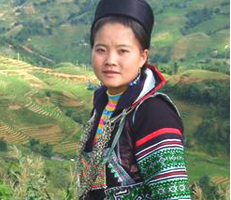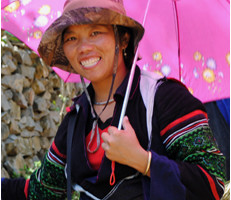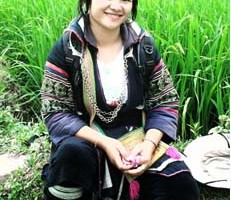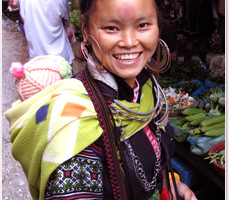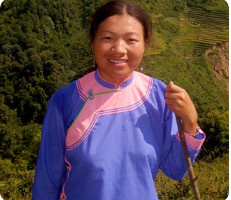About
Sapa Travel is a team of experienced guides in Sapa Town and its villages. Sapa Travel is not a big company, and we do not pretend to be. Our work is to combine a personal touch with a high level of reliability, while maintaining excellent value for our inbound destination management services to Sapa and the North of Vietnam. We compete with a flexible and creative attitude towards travel, and by doing what we say when we say we will do it. While many large companies promise to have their ‘best’ team on the ground, we ARE the team on the ground, providing you unparalleled communication and attention you deserve.
Special thanks to Mr. Tran Quoc Long from First Choice who has spent lot of time advising us how to build the website contents and how to be indexed by Search Engine. You can connect him via Google Plus Tran Quoc Long
Our Mission statement
- To bring the most convenience, the most satisfaction with the best price for travellers.
- To create and remain the best working environment for staffs who have passion, enthusiastic and ambition in developing themselves.
- To be responsible for sustainable tourism development .
Your Experience
Working with Sapa Travel is distinct from many other companies in the industry. We offer a smaller atmosphere and pride ourselves in our honesty and commitment to your travel. Whether you are a specialty tour operator or a large services company exploring a niche market, we try our best to accommodate your specific needs by maintaining open, honest lines of communication, providing relevant cost structures and explaining the difficulties and challenges, in advance, for selected destinations. Most of all, you will experience what it means to have a flexible, dependable and insightful agent, on the ground and on top of your needs.
Our Expertise
Recognized as a “Sapa Destination Expert” on worldwide travel forum – TRIPADVISOR “Certificate of Excellence” for service in 2012 by TRIPADVISOR and voted in top 10 best tours in Sapa since 2010, we are proud to offer you a full-range of travel services in Lao Cai with aim “Best Deals, Expert Advice”.
Philosophy
“Customers are our unique boss. No customers are no jobs, no company, no director, no staffs.” Our team know clearly that customers play very important role in our development , they bring us jobs, opportunities and they can dismiss any one in company from director to staffs by simply way buying product from other companies. So we always put our customers to the center position of our purposes in any daily work.
You may need to know about Sapa before travelling
The Queen of the Mountains, Sapa sits regally overlooking a beautiful valley, lofty mountains towering over the town on all sides. Welcome to the destination in northwest Vietnam, gateway to another world of mysterious minority cultures and luscious landscapes. The spectacular scenery that surrounds Sapa includes cascading rice terraces that spill down the mountains like a patchwork quilt. The mountains are often shrouded in mist that rolls back and forth along the peaks, offering tantalizing glimpses of what lies in wait on a clear day. The valleys and villages around Sapa are home to a host of hill-tribe people who wander in to town to buy, sell and trade.
In a beautiful valley close to the Chinese border, Sapa is a former hill station built in 1922. History has not always been kind to Sapa, and the series of conflicts that swept over Vietnam nearly saw it wiped off the map. From WWII, successive wars against the French and the USA, not forgetting the more recent border skirmish with China in 1979, took their toll. The old hotels built by the French were allowed to fall into disrepair and Sapa was forgotten by all but a handful of residents.
With the advent of tourism, Sapa has experienced a renaissance. Bad roads have been upgraded, many streets have been given names, countless new hotels have popped up, the electricity supply is reliable and the food has improved immeasurably. Inherent in all of this prosperity is cultural change for the Montagnards, many of whom are now well versed in the ways of the cash economy and are reaping the financial rewards of the tourism influx. The downside is a building boom that has seen one hotel after another raise the roof in a continual quest for better views. Height restrictions are rarely enforced and the Sapa skyline is changing for the worse.
Another inconvenience that will not change is the weather. If you visit off-season, don’t forget your winter woollies. Not only is it cold (like 0°C), but winter brings fog and drizzle. Quite why the French alighted on this spot is difficult to comprehend: it must have been one of those rare clear days when the views are to die for. The chilly climate does have its advantages, however. The area boasts temperate-zone fruit trees bearing peaches and plums, and gardens for raising medicinal herbs.
Some pictures of our guides
- Giang Thi Lan – Tour Guide
- Ly Thi Mang- Tour Guide
- Ly Thi Sung- Tour Guide
- Ly Za Za – Sapa Guide
- Ly Thi So – Sapa Travel
- Our guide in Sapa Travel
The dry season in Sapa lasts from around January to June. January and February are the coldest (and foggiest) months. From March to May the weather is often excellent, and the summer is warm despite the rains between June and August. The window from September to mid-December is a rewarding time to be in Sapa, though there is a bit of lingering rain at the start and the temperature dips by December.
Sapa would be of considerably less interest without the H’mong and Dzao people, the largest ethnic groups in the region. The billowing red headdresses of the Red Dzao are visible all over town, a surreal sight amid the accelerating development. The H’mong are more numerous and canny traders. Their villages may look medieval but most will have a mobile phone and an email address to stay in touch. Traditionally, they were the poorest of the poor, but have rapidly learnt the spirit of free enterprise. Most of the Montagnards have had little formal education and are illiterate, yet all the youngsters have a good command of English, French and a handful of other languages.
If possible, try to visit during the week, when Sapa is less crowded and more intimate. Crowds flock to Sapa for the Saturday market, but a smaller market is held every day. There is plenty to see on weekdays, and there are lots of interesting villages within walking distance of the centre.




